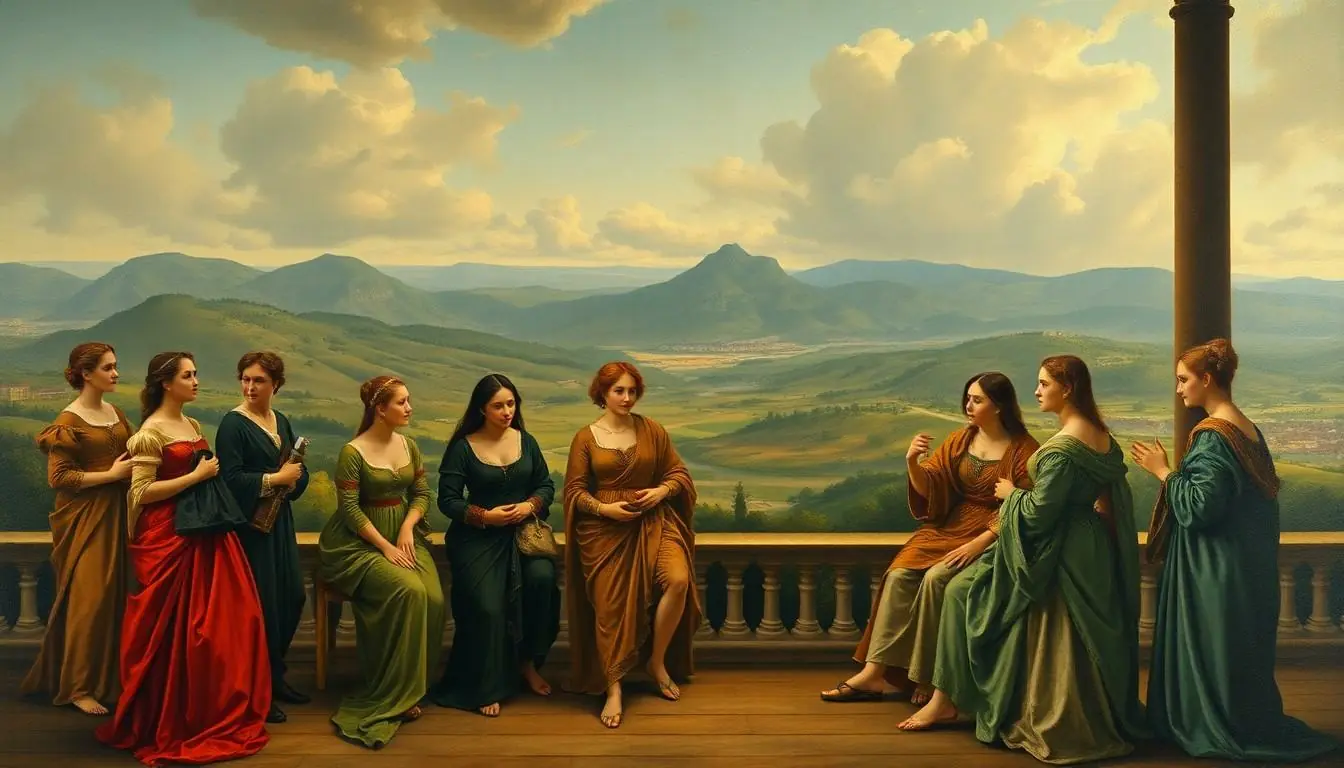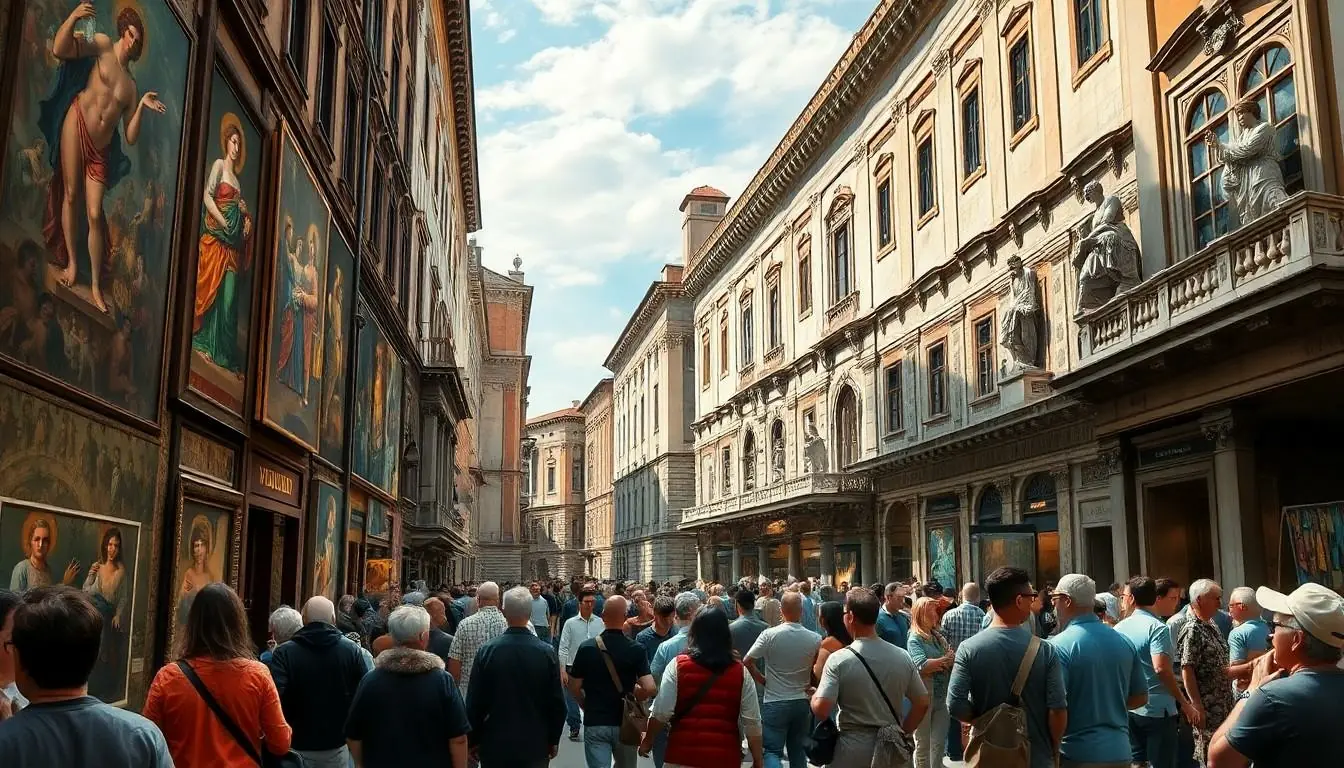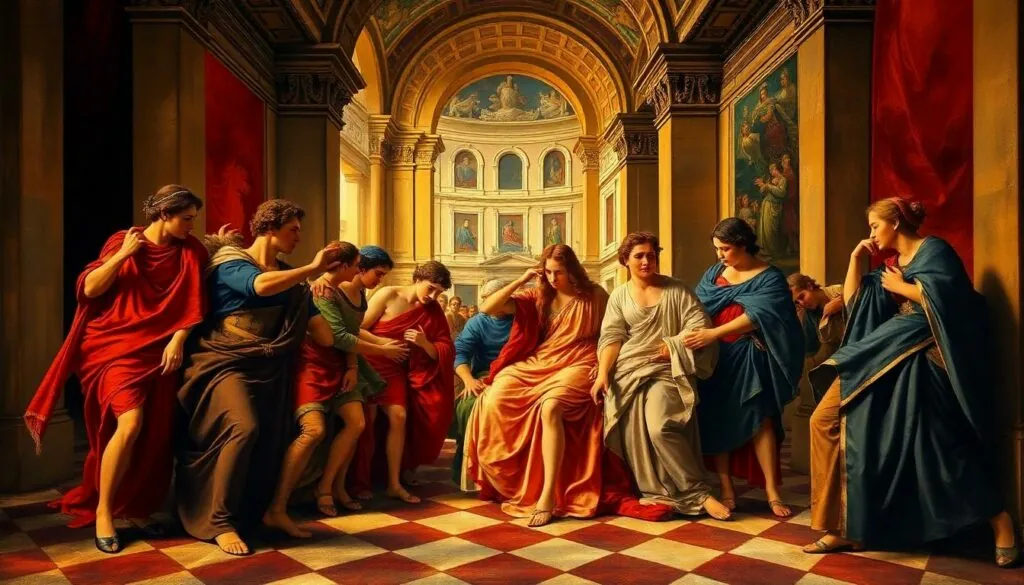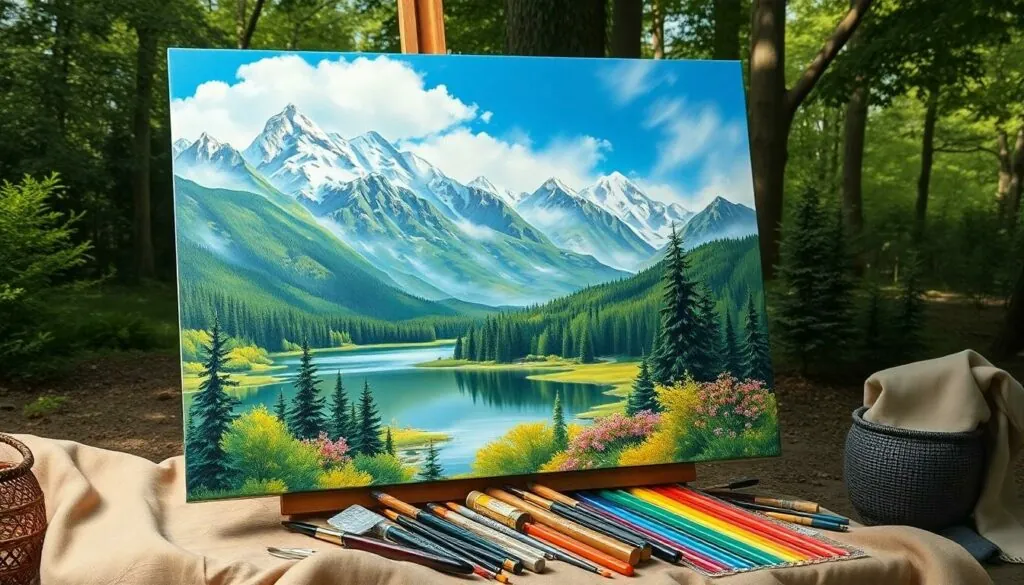Step into the vibrant world of Italian Renaissance painting, where art transformed from mere decoration to a powerful expression of human emotion and intellect. Imagine walking through sunlit streets filled with the masterpieces of titans like Leonardo da Vinci and Michelangelo, each brushstroke whispering secrets of their time. This era wasn’t just about pretty pictures; it was a full-blown cultural revolution that turned the art world on its head.
Table of Contents
ToggleOverview of Italian Renaissance Painting
Italian Renaissance painting signifies a pivotal transformation in art, marked by the revival of classical ideals and techniques. Artists prioritized realism and human emotion, bridging the gap between the divine and the earthly. Key figures like Leonardo da Vinci, Michelangelo, and Raphael emerged during this vibrant period, each contributing unique styles and innovations.
Da Vinci’s use of sfumato created a softness in his portraits, allowing for more lifelike representations. Michelangelo, recognized for his grand scale and muscular figures, portrayed human strength and emotion in works like the Sistine Chapel ceiling. Raphael’s balanced compositions and serene expressions showcased an ideal beauty, influencing generations of artists.
The era featured significant advancements in perspective, employing techniques like linear perspective to create depth and realism. Artists studied anatomy extensively, drawing inspiration from classical sculptures. This attention to detail elevated the human form as a central theme in their works.
Major artworks and frescoes adorned churches and public spaces, demonstrating the intersection of art and architecture. The incorporation of light and shadow added a three-dimensional quality, enhancing the viewer’s experience. Notable pieces include the “Mona Lisa,” celebrated for its mysterious smile, and “The School of Athens,” illustrating the gathering of great minds.
Patrons, including the Medici family, fueled artistic innovation by commissioning significant works. Their support allowed artists to experiment with new ideas, pushing the boundaries of creativity. This cultural revolution laid the foundation for modern Western art, influencing styles from Baroque to Neoclassicism.
In summation, Italian Renaissance painting thrived on humanistic principles, skillful techniques, and vibrant creativity, making it one of the most crucial movements in art history.
Key Characteristics of the Style

Italian Renaissance painting features several defining characteristics that set it apart from prior artistic movements. Artists embraced realism and sought to depict the world through a more humanistic lens.
Use of Perspective
Perspective played a crucial role in the evolution of Italian Renaissance painting. Artists such as Brunelleschi established linear perspective, creating an illusion of depth on flat surfaces. This technique enabled them to represent spatial relationships accurately. Furthermore, the positioning of figures created a sense of three-dimensionality, drawing viewers into the scene. Leonardo da Vinci expertly utilized atmospheric perspective, illustrating how colors and clarity fade with distance. This innovation captivated audiences and added a new dimension to storytelling in art.
Color and Light Techniques
Color and light techniques significantly enhanced the emotional quality of Italian Renaissance paintings. Use of chiaroscuro, or the contrast between light and shadow, allowed artists like Caravaggio to create dramatic effects. Shadows sculpted form, bringing figures to life in a striking manner. Moreover, the careful blending of colors achieved luminous effects, inviting viewers to engage with the artwork. Sfumato, a technique perfected by Leonardo da Vinci, allowed for soft transitions between colors, enhancing realism. This nuanced approach to color theory marked a shift towards more expressive and vibrant artwork.
Influential Artists and Their Works
Italian Renaissance painting boasts several renowned artists whose work defined the era. They played crucial roles in advancing techniques and exploring themes that resonate even today.
Leonardo da Vinci
Leonardo da Vinci stands as one of the most celebrated figures of the Renaissance. His masterpiece, the “Mona Lisa,” captivates viewers with its enigmatic expression and masterful use of sfumato. Da Vinci emphasized realism through meticulous attention to detail, capturing the subtleties of human emotion. In addition, “The Last Supper” showcases his innovative composition and perspective, creating depth within the narrative. The interplay of light and shadow highlights the dramatic moments of betrayal and revelation. His studies in anatomy deeply informed his artistic creations, blending science with art.
Michelangelo
Michelangelo profoundly shaped the landscape of Renaissance art. His sculpture of David exemplifies the idealized human form, emphasizing strength and beauty. The Sistine Chapel ceiling illustrates his mastery of fresco techniques, depicting scenes from Genesis. Each figure in the frescoes reflects a unique emotional intensity, showcasing his understanding of human anatomy. Michelangelo’s work transcends traditional boundaries, merging sculpture and painting to create immersive experiences. Additionally, his ability to convey movement and emotion within his figures significantly influenced future generations.
Raphael
Raphael emerges as a pivotal artist known for his harmonious compositions. “The School of Athens” highlights his skill in integrating classical philosophy with artistic expression. Within this work, renowned thinkers from history engage in scholarly discourse, emphasizing the revival of classical ideals. His use of perspective creates a sense of depth, guiding the viewer’s eye through the scene. Additionally, Raphael’s depictions of the Madonna reflect tenderness and grace, establishing a new standard for religious art. His contributions to the High Renaissance established a blueprint for beauty and balance in art.
Major Themes in Italian Renaissance Painting
Italian Renaissance painting reveals major themes that reflect the culture of its time. A significant focus on religion and mythology emerges within the artwork, showcasing a blend of sacred and secular subjects.
Religion and Mythology
Religious themes dominate many masterpieces, illustrating biblical scenes and figures. Artists like Michelangelo often depicted divine subjects with an emphasis on human emotions, creating a connection between the sacred and the viewer. Iconic works, such as the “Creation of Adam,” exemplify this profound fusion. Mythological themes also gained prominence, featuring gods and heroes from ancient texts. Raphael’s “The School of Athens” illustrated harmonious integration of classical mythology with philosophy, demonstrating the era’s fascination with ancient narratives. Through these elements, artists engaged viewers with spiritual concepts while celebrating classical heritage, bridging two significant aspects of the human experience.
Humanism and Individualism
Humanism played a vital role in shaping the themes of Italian Renaissance painting, placing emphasis on the individual and the human experience. Artists began to focus on realistic portrayals of human subjects, moving beyond idealized representations. Da Vinci’s work exemplifies this shift, as seen in the lifelike features of the “Mona Lisa.” Individualism characterized many pieces, allowing viewers to connect with the emotions and stories of each figure. Portraiture became particularly important, celebrating unique identities and promoting the idea of personal significance. As a result, artists like Titian captured individual stories, reflecting the broader cultural movement that emphasized personal potential and the beauty of the human experience.
The Impact of Italian Renaissance Painting
Italian Renaissance painting significantly influenced the course of art history. A revival of classical ideals emerged alongside advancements in techniques, allowing artists to prioritize realism and human emotion. Prominent figures such as Leonardo da Vinci, Michelangelo, and Raphael played crucial roles in shaping artistic innovation during this transformative period.
Da Vinci’s masterful works like the “Mona Lisa” and “The Last Supper” showcased his innovative use of sfumato and composition. Michelangelo’s iconic sculptures, including David, exemplified his ability to infuse emotional intensity into form. Raphael’s harmonious compositions, particularly in the “School of Athens,” highlighted the integration of classical philosophy with artistic expression.
Artworks from this era adorned churches and public spaces, melding art with architecture. Major advancements in perspective, led by artists such as Brunelleschi, created depth in artistic representation. Techniques involving color and light, including chiaroscuro and atmospheric perspective, enhanced the emotional quality of paintings, inviting deeper viewer engagement.
Various themes reflected the cultural context of the time, with religious and mythological subjects dominating many masterpieces. Artists like Michelangelo portrayed divine subjects that emphasized human emotions, such as the “Creation of Adam.” In addition, mythological themes gained prominence through works like the “School of Athens,” where classical mythology intermingled with philosophy.
This flourishing cultural movement laid the groundwork for modern Western art. The influence of Italian Renaissance painting persists, shaping styles from Baroque to Neoclassicism. Artistic exploration during this time celebrated individualism and humanism, allowing viewers to connect with the unique identities and emotions of each figure.
Italian Renaissance painting represents a remarkable evolution in the art world. It redefined not only artistic techniques but also the way humanity connected with art. The focus on realism and emotional depth transformed how artists expressed the human experience.
The innovations of masters like da Vinci, Michelangelo, and Raphael continue to inspire artists and art lovers alike. Their ability to merge classical ideals with personal expression set the stage for future movements. The themes of religion and mythology explored during this period resonate with audiences even today, highlighting the timeless nature of these masterpieces.
Ultimately, the Italian Renaissance stands as a testament to the power of art in capturing the essence of human emotion and intellect, leaving an indelible mark on the history of creativity.



